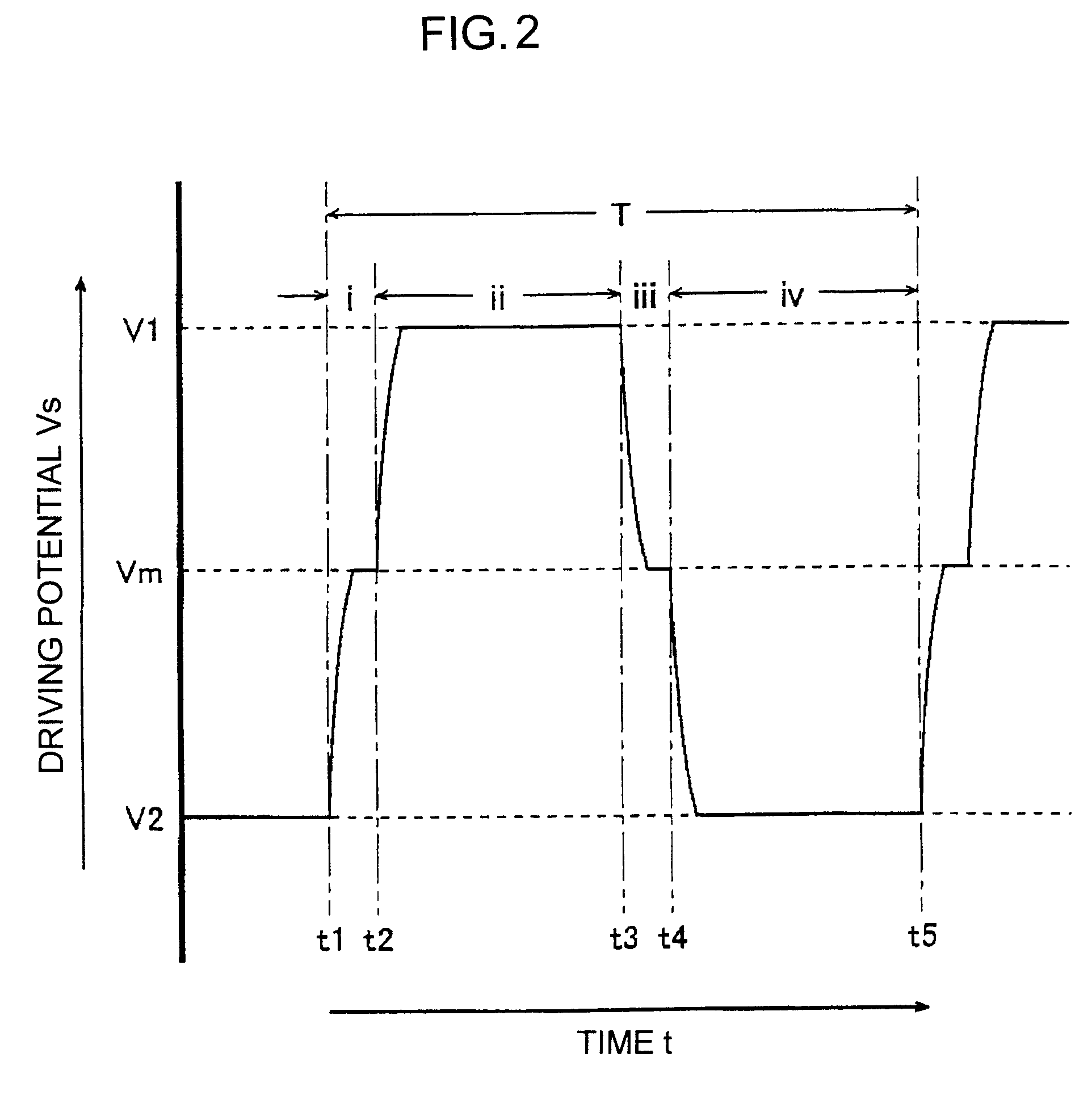Method and apparatus for driving capacitive load, and LCD
a capacitive load and capacitive load technology, applied in the field of methods and apparatus for driving capacitive load and lcd, can solve the problems of inability to control the power supply circuit, the power supply circuit is always occupied by current i, and the display quality of the cell is affected, so as to reduce the power consumption rate, suppress the variation of driving potential, and reduce the charge and discharge current
- Summary
- Abstract
- Description
- Claims
- Application Information
AI Technical Summary
Benefits of technology
Problems solved by technology
Method used
Image
Examples
Embodiment Construction
"d_n">[0040]FIGS. 6(a)-6(c) illustrate typical behaviors of driving potentials Vs in a conventional, an ideal, and a non-ideal driving schemes.
[0041]FIG. 7 illustrates a principle for reduction of consumption current.
[0042]FIG. 8 shows an exemplary arrangement of a signal electrode driver 2.
[0043]FIGS. 9(a)-9(c) show equivalent circuit of the segments undergoing simultaneous transitions from a first potential V1 to a third potential Vm.
[0044]FIG. 10 is a timing diagram of PWM control of the load driving periods for neighboring segments.
[0045]FIG. 11 is an equivalent circuit of the segments undergoing simultaneous changes from a first potential V1 to a third potential Vm and from a second potential V2 to the third potential Vm.
[0046]FIG. 12 shows an arrangement of a conventional capacitive load drive unit for driving a capacitive load.
[0047]FIG. 13 is a timing diagram of the drive unit shown in FIG. 12.
DETAILED DESCRIPTION OF PREFERRED EMBODIMENTS
[0048]A method and a drive unit accor...
PUM
 Login to View More
Login to View More Abstract
Description
Claims
Application Information
 Login to View More
Login to View More - R&D
- Intellectual Property
- Life Sciences
- Materials
- Tech Scout
- Unparalleled Data Quality
- Higher Quality Content
- 60% Fewer Hallucinations
Browse by: Latest US Patents, China's latest patents, Technical Efficacy Thesaurus, Application Domain, Technology Topic, Popular Technical Reports.
© 2025 PatSnap. All rights reserved.Legal|Privacy policy|Modern Slavery Act Transparency Statement|Sitemap|About US| Contact US: help@patsnap.com



